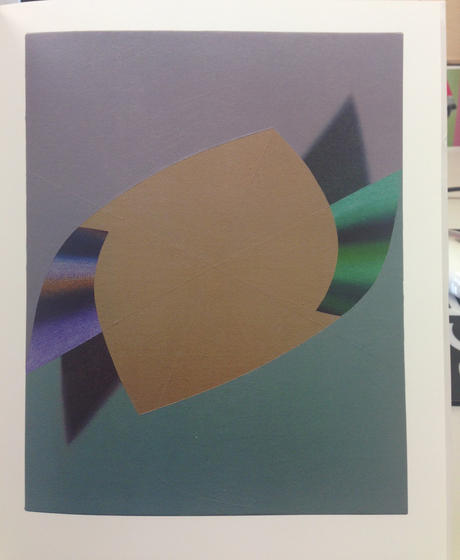Julie Rafalski
Layers of Paint
That which was before now appears to come after. That which is at the front appears to fall backwards. The past appears to come after the present. Time is fractured, as in a film which continuously flashes back to earlier times, changing the narrative.

In Tomma Abts' painting, Welf, the two colourful, almost metallic-looking shapes which seem to have been painted before everything else as the paint looks thinly applied in these areas, cast shadows onto what looks like the layer of paint applied later in the painting process. The past casts shadows on a future time.
The seven pie-like sections from an earlier underpainting are barely visible because of the minute ridges in the paint. These 7 sections have something to do with the two metallic shapes but only partially, for there are some paint ridges that seem to imply that the metallic shapes once had more rounded edges. Things seem to offer clues to how the painting was painted, but only ever leaving the viewer unable to determine for certain how it came about.
The layers of paint (or time) are all mixed up, creating a form that is in part made of surfaces dating from different times: different temporalities exist on the same picture plane. A layering of planes, each pointing to its own reality, its own time- erase the one-directional flow of time, leaving behind a puzzle where cause and effect no longer apply.

